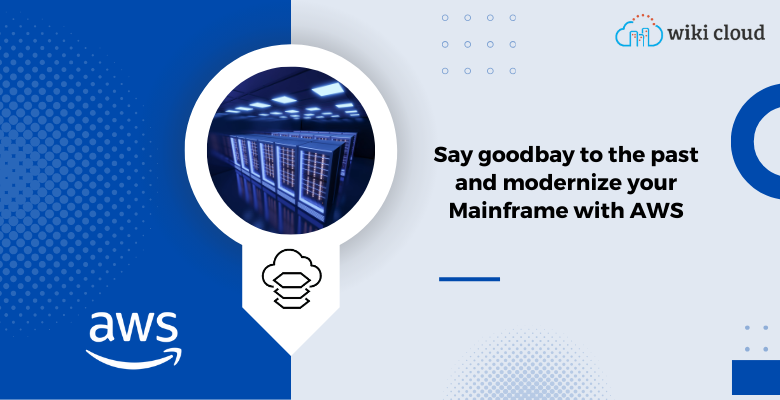Introduction
In today's business world, the technology is evolving at an unprecedented speed, and companies are constantly looking for ways to adapt, update their technology and improve their operations. In this context, mainframe modernization has become a pressing need for many organizations that depend on these robust infrastructures to run their critical and business applications, with the aim of improving and strengthening their infrastructures in an increasingly competitive business environment offering better solutions to their clients.
The companies that obtain to modernize their mainframes in the cloud, not only improve their ability to respond to market changes, but also benefit from cost and resource optimization, improved business agility, and the ability to offer more innovative services and products adapted to consumer demands.
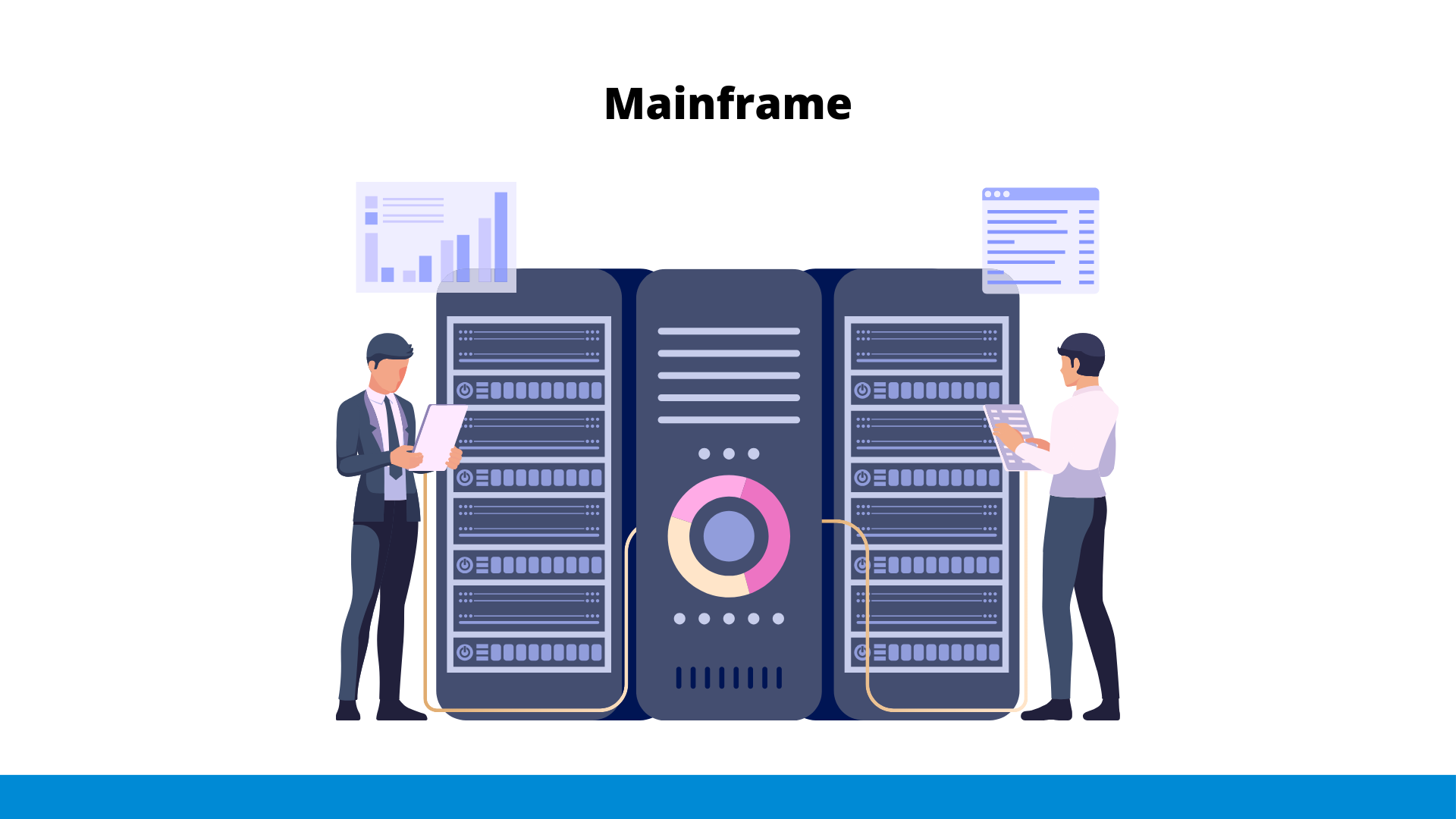
Let us remember that IBM (International Business Machines Corporation) was one of the main pioneers in the development and evolution of mainframes, where IBM defines the mainframe as follows: "Mainframes are high-performance computers with large amounts of memory and processors, which process billions of simple calculations and transactions in real time. The mainframe is critical for business databases, transaction servers, and applications that require resiliency, security, and agility. Mainframes are data servers designed to process up to 1 billion transactions daily with the highest levels of security and reliability."
Mainframe history
The history of the mainframe dates back to the mid-20th century and has been a fundamental part of the development of enterprise computing. Below I summarize the main milestones in the history of the mainframe:
- 1940s: In 1944 IBM, together with Harvard University, developed the ASCC, “Automatic Sequence Controlled Calculator”, also know as “The Harvard Mark I”, considered the first electromechanical computer, marking the beginning of the mainframe era.
- 1950s: IBM emerges as a leader in the mainframe industry with its 700/7000 series. UNIVAC I, created by Remington Rand, became the first commercial computer sold on a large scale.
- 1960s: In 1962 IBM announced that COBOL would be its primary development language. In 1964, IBM launched the System/360 series, an innovative family of mainframes that offered compatibility across multiple models and laid the foundation for future developments in mainframe architecture. Transistors were adopted in this generation of mainframes, which significantly increased processing speed and reduced power consumption.
- 1970s: In this decade, IBM introduced the System/370 series, a family of mainframes that marked a before and after in the industry, where introduced the integrated circuits and semiconductor memory, further improving performance and reducing physical size.
- 1980s and 1990s: IBM embraced open systems and introduced the System/390 series, which could run multiple operating systems, including Linux, along with traditional mainframe operating systems such as z/OS. This move allowed mainframes to remain relevant in a rapidly changing computing landscape.
- 2000s: In the new millennium, modern mainframes (zSeries) released by IBM continued to advance in processing power, memory, and I/O capabilities. Mainframe vendors introduced virtualization technologies that allowed multiple virtual machines to run simultaneously on a single mainframe.
- 2010s to today: The cloud and artificial intelligence appear, opening new opportunities for mainframe modernization.
Over the decades, the mainframe market has seen the emergence of various manufacturers, but it is indisputable that IBM has stood out as the undeniable pioneer in this technology. Since its first steps, IBM has led the evolution of mainframes, establishing standards, continuously innovating and consolidating its position as a benchmark in the industry. Although new competitors have emerged over time, IBM's lasting influence and continued dedication have left an indelible mark on the history of mainframes, cementing its reputation as the undisputed leader in the field.
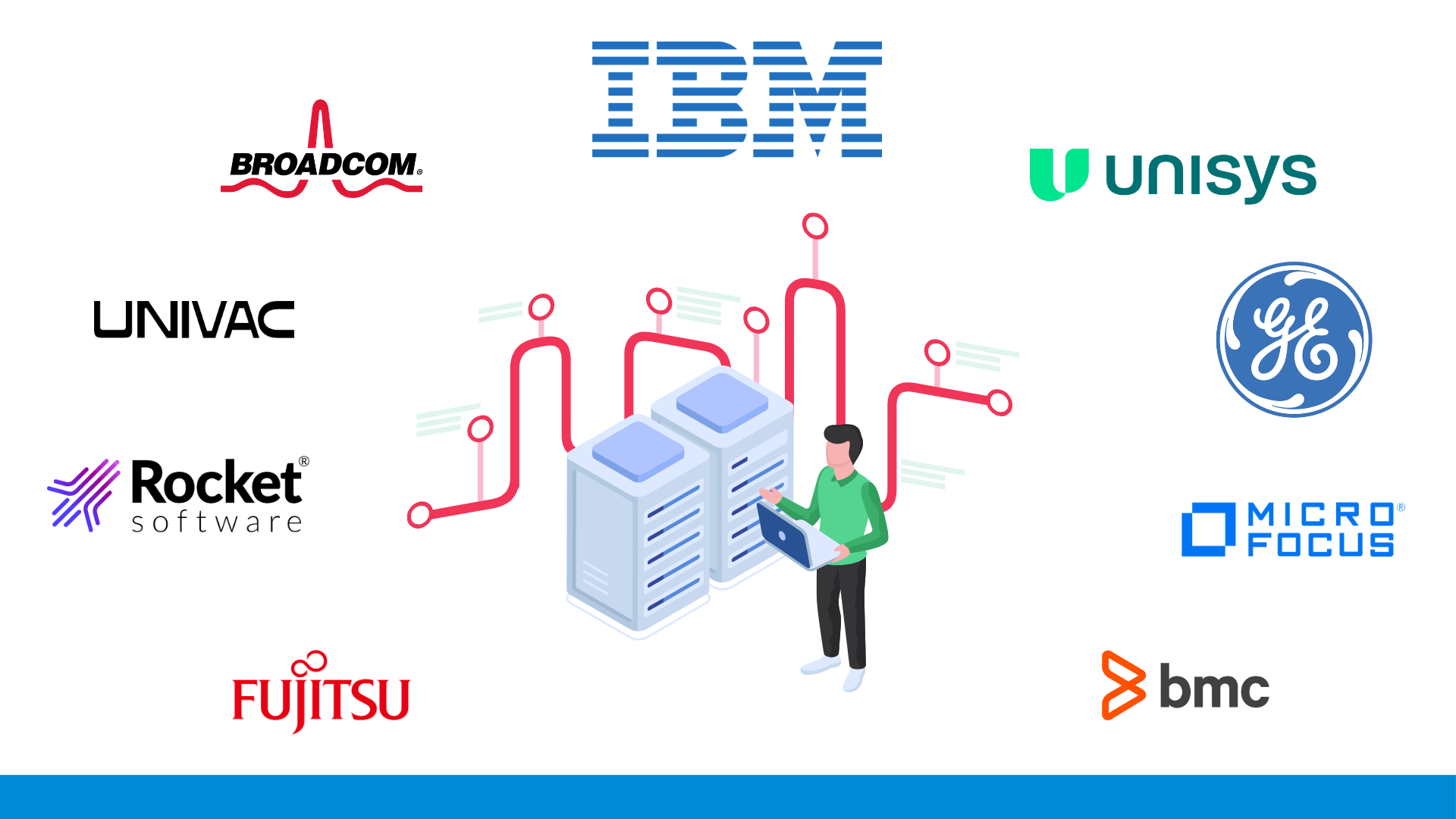
Mainframe Modernization on AWS
AWS currently offers a cloud mainframe application modernization and migration service called AWS Mainframe Modernization, which is much more than a simple mainframe migration to the cloud. It is a comprehensive approach that addresses the complexity of legacy systems, allowing companies to overcome technological limitations and embrace the agility, scalability and efficiency inherent in the AWS cloud.
This service offers a set of tools and best practices designed to facilitate the modernization of mainframe applications to managed execution environments in the AWS cloud. It allows you to select migration and modernization patterns such as replatforming or automatic refactoring by completely rewriting and modernizing mainframe applications. AWS Mainframe Modernization allows organizations to choose the path that best suits their specific business needs.
Additionally, it allows you to analyze existing mainframe applications, develop and update these using languages such as COBOL or PL/I, and implement automated continuous integration and continuous deployment (CI/CD) pipelines using the AWS toolset.
During the November 2021 re:Invent event, AWS Mainframe Modernization was released to the public (GA) for the benefit of customers and partners, making this innovative solution available to them in the AWS cloud.
AWS has been recognized as a leader in the report “2023 ISG Provider Lens Mainframes – Services and Solutions for Mainframe Application Modernization Software”. This report ranks software vendors and toolsets that enable legacy application assessments and application conversion (replatform, rehost, refactor, rewrite, or redesign).
How does the AWS Mainframe Modernization Service work?
AWS Mainframe Modernization is a set of services and tools designed to facilitate the migration and modernization of applications and workloads running on mainframes to the AWS.
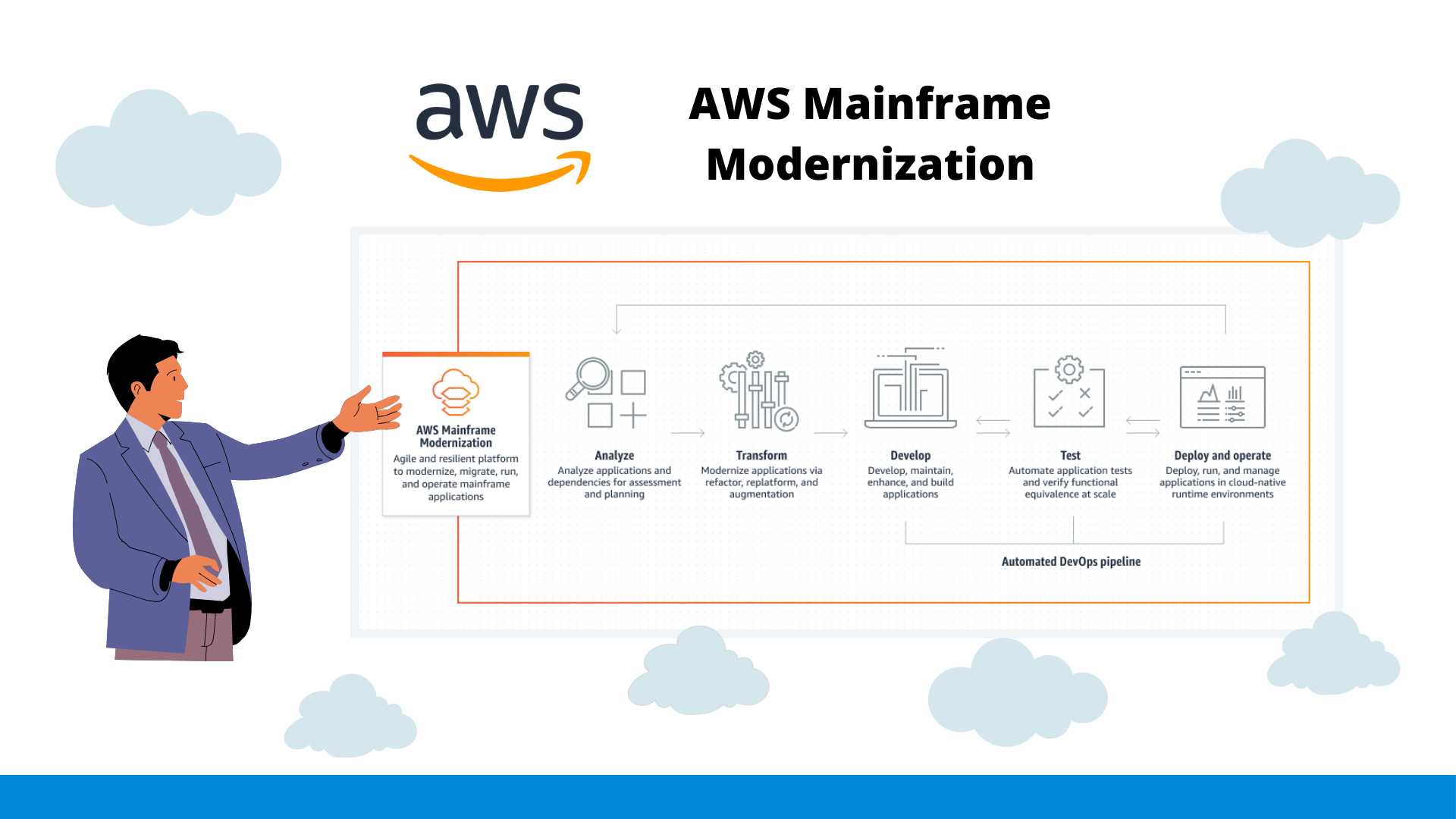
Next, I will explain in a general way how this service works and each of its stages:
Analysis
- At this stage, are established clear objectives for modernization, such as improving agility, reducing costs, or taking advantage of new cloud capabilities.
- A comprehensive assessment of existing mainframe applications and workloads is performed to understand their architecture and dependencies.
- Applications are prioritized for modernization based on criteria such as business criticality, technical complexity, and the potential for quick wins.
- Finally, a migration plan is established that may include the progressive modernization of applications in several phases.
Transformation
- The transformation stage is essential to lay the foundation for a successful migration and ensure that cloud-adapted applications are optimal in terms of performance, costs and business agility.
- In this stage, the mainframe modernization strategy is evaluated and selected where you can opt for a pattern focused on refactoring the application or a pattern focused on replatforming the existing mainframe infrastructure in the AWS cloud.
- Choosing the appropriate strategy will depend on the specific objectives of the company and the characteristics of the mainframe applications to be modernized.
Development
- At this stage are offer tools that allow to the applications to be adapted by making modifications to them to take advantage of the advantages of the cloud and new technologies.
- It can also be used to integrate modernized applications with other existing systems in the cloud or on-premises environments.
Test
- At this stage, tools are offered to create and run automated application tests and verify the correct operation of the applications.
Deployment and operation
- The deployment stage is essential because we will now be able to see the modernized mainframe application implemented within the native AWS execution environments.
- Additionally, continuous monitoring mechanisms are established to monitor the performance, security and availability of applications in the AWS cloud.
- AWS Mainframe Modernization is a managed service, so AWS is responsible for the management and maintenance of the infrastructure within the cloud environment.
Patterns
The AWS Mainframe Modernization patterns are a set of predefined and validated solutions that help migrate and modernize mainframe applications quickly and efficiently. These patterns are based on industry best practices and are designed to help overcome common mainframe modernization challenges.
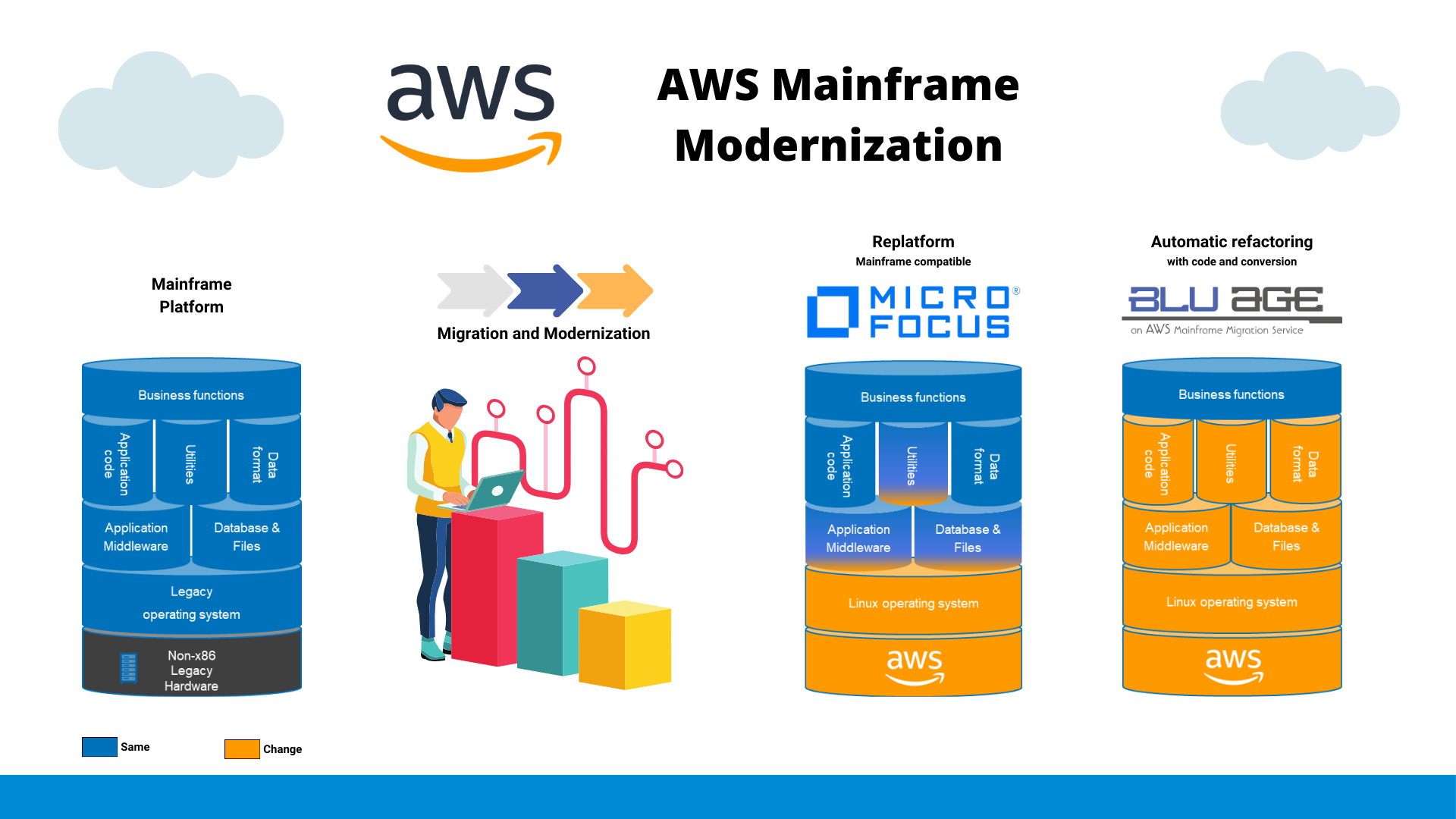
Automatic refactoring with Blu Age
A couple of years ago AWS acquired the company Blu Age that provides software and tools to modernize mainframe applications. Currently, Blu Age, through its AWS Blu Insights solution, has been integrated into the AWS Mainframe Modernization service solution stack.
AWS Blu Insights It is a comprehensive service of AWS Mainframe Modernization that facilitates planning, collaboration, and modernization of legacy mainframe applications. This service is presented as a Software as a Service (SaaS) tool that automatically performs refactoring in AWS, converting existing COBOL code to Java while preserving the original logic and functionality. This process not only changes the language, but also modernizes the code structure to take advantage of the Java platform.
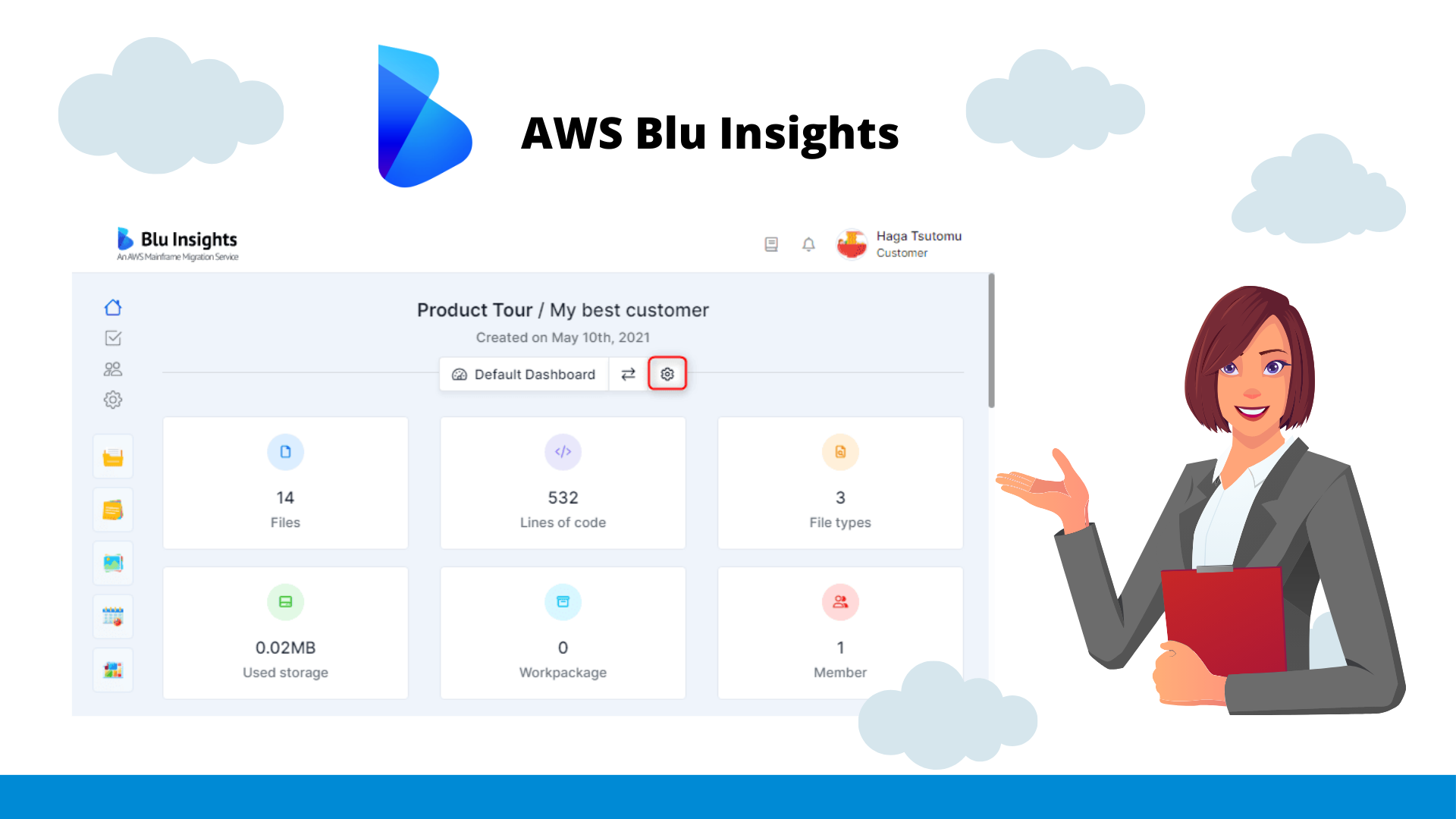
The benefits of the Blu Age solution are as follows:
- Time and effort savings: Significantly reduces the time and effort required to modernize mainframe applications.
- Preservation of logic and functionality: The resulting Java code preserves the logic and functionality of the original COBOL code.
- Leverage the benefits of Java: Take advantage of the benefits of the Java platform, such as portability, scalability, and the broad developer community.
- Code modernization: Java code is modernized using techniques such as refactoring and reengineering to improve its readability, maintainability, and scalability.
- Performance improvement: Optimizations are made to improve the performance of Java code in the cloud.
The AWS solution for refactoring with Blu Age works as follows:
- Blu Age analyzes the original COBOL code to understand its logic and structure.
- An equivalent Java code is generated that reflects the logic and functionality of the original COBOL code.
- Java code is refactored to improve its readability, maintainability, and scalability.
- Optimizations are made to improve the performance of Java code in the cloud.
Blu Age supports a wide range of COBOL applications, including:
- Business applications
- Financial applications
- Data management applications
- Telecommunications applications
Replatform with Micro Focus
AWS partners with Micro Focus to offer mainframe migration as a service. Micro Focus is an AWS replatform solution that allows you to run COBOL and PL/I mainframe applications without modifications in a virtualized mainframe environment in the cloud. This option offers a familiar, low-risk path to mainframe modernization.
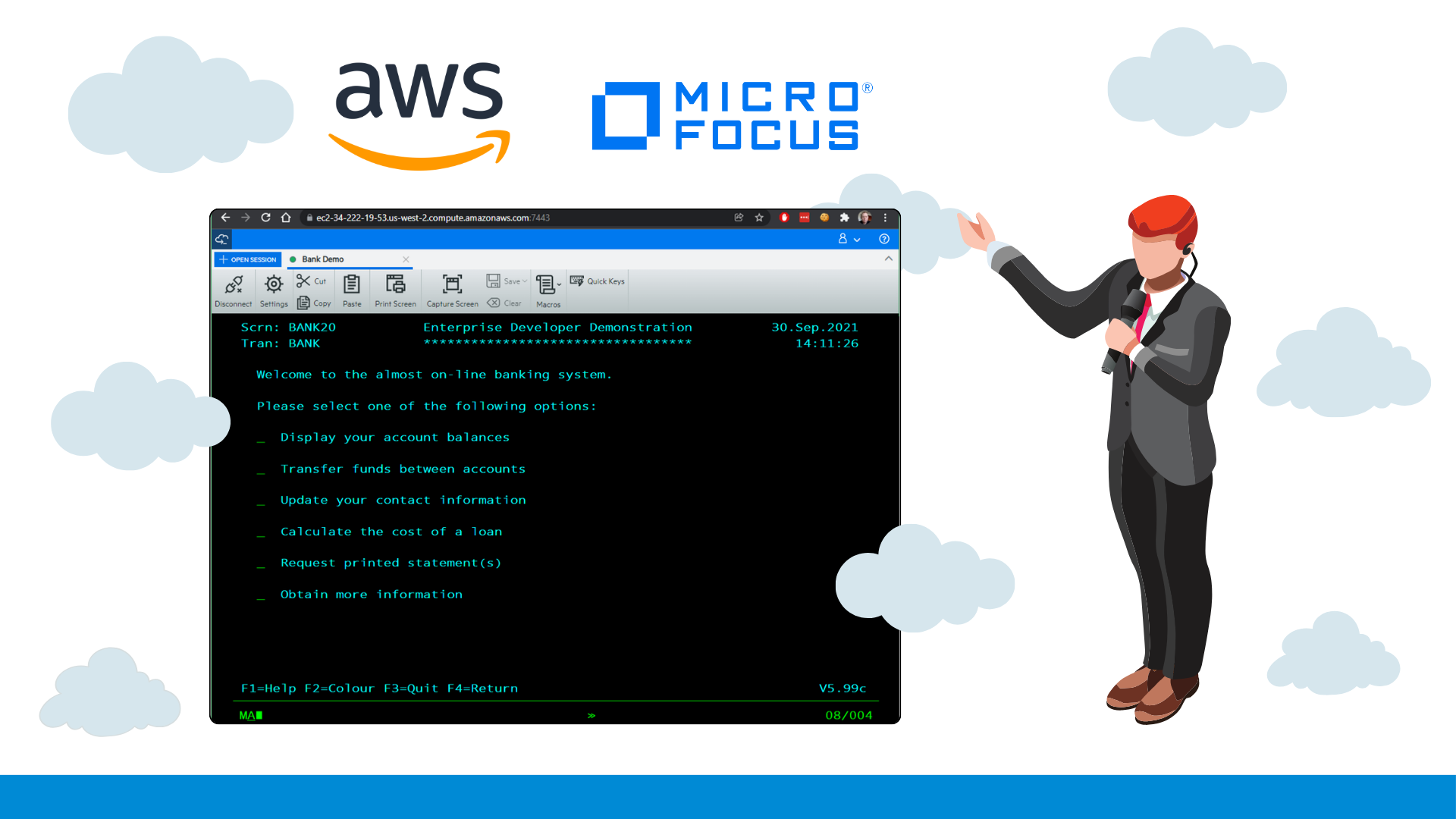
The benefits of the Micro Focus solution are as follows:
- Risk reduction: Minimize the risk of errors during migration by avoiding code modifications.
- Gradual transition: Allows a gradual transition to the cloud, migrating applications at an optimal pace.
- Familiar environment: Provides a familiar environment for mainframe developers who do not need to learn new technologies.
- Leverage the cloud: Take advantage of the benefits of the cloud, such as scalability, security, and cost efficiency.
The AWS replatform solution with Micro Focus works as follows:
- A virtualized mainframe environment is created on AWS using Micro Focus technology.
- Mainframe applications are migrated to the virtualized environment without the need to modify the code.
- Mainframe applications run in the virtualized environment as if they were on a physical mainframe.
Benefits of modernizing with AWS
- Agility and scalability: The cloud allows applications to scale quickly and efficiently to meet changing business demands.
- Cost reduction: Reduces operating and maintenance expenses associated with traditional mainframe infrastructure.
- Accelerated innovation: Modernization opens the door to new technologies and frameworks, driving innovation and the development of new functionalities.
- Security and Reliability: AWS provides a highly secure and reliable environment for critical mainframe applications.
AWS Migration Acceleration Program (MAP) for Mainframe
The AWS Migration Acceleration Program (MAP) for Mainframe is an extension of the AWS MAP program existing, this program is designed to help organizations achieve their migration goals even faster using AWS services, best practices, tools, and incentives. AWS provides a three-step approach to help reduce the uncertainty, complexity, and cost of migrating to the cloud.
Through MAP for Mainframe, customers gain access to a complete ecosystem of mainframe technology and partners with professional services expertise who can assist with migration and modernization processes. Customers can enhance their core applications and data portfolios by leveraging the agility, ease of access, and community of the cloud.
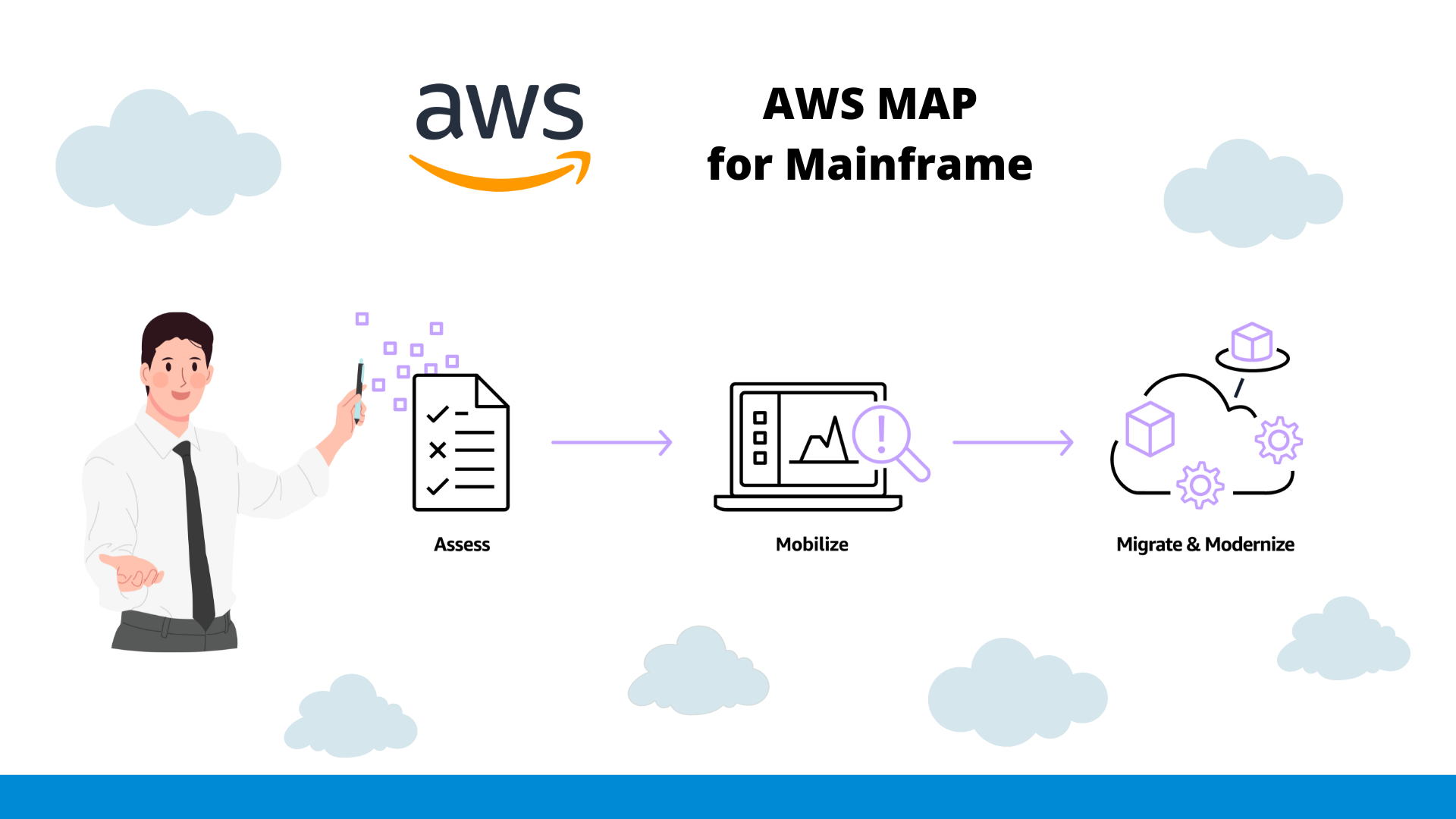
Conclusions
Using the AWS Mainframe Modernization service offers organizations a clear path to digital transformation, enabling the efficient migration and modernization of mainframe applications to the AWS cloud. This process highlights AWS's ability to deliver flexible modernization strategies, from rapid, low-risk approaches to the adoption of cloud-native architectures. The benefits include greater business agility, cost reduction, scalability and leveraging the latest technologies. Additionally, the integration of services such as AWS Lambda, Amazon RDS, and CI/CD practices drives innovation and accelerates the development cycle, positioning organizations to successfully meet the technological challenges of the future.
Resources
Review the following resources to learn more about mainframe modernization on AWS:
- AWS Mainframe Modernization
- YouTube – Introduction AWS Mainframe Modernization
- Blog – AWS Mainframe Modernization
- AWS Mainframe Modernization User Guide
- AWS Mainframe Modernization Refactoring with AWS Blu Age
- AWS Mainframe Modernization Replatform with Micro Focus
- AWS MAP for Mainframe
Hope will be useful.
Best Regards,
Follow us:

